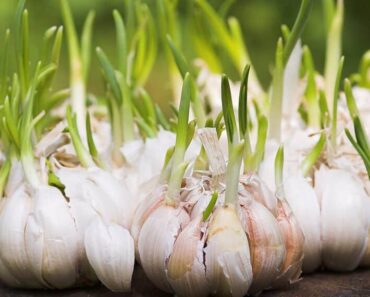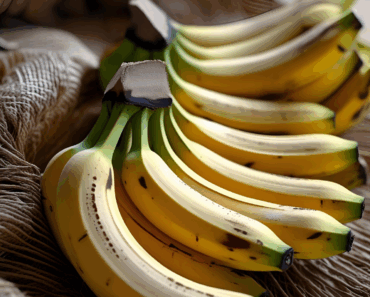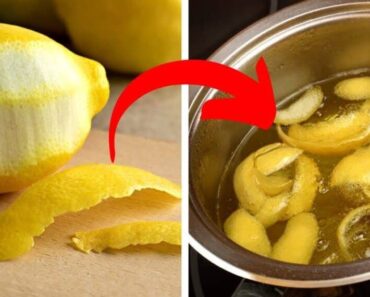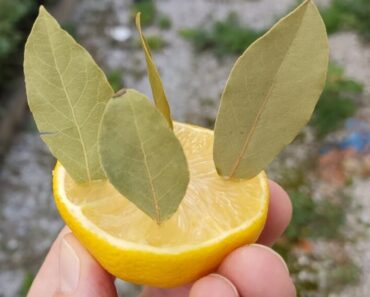Introduction
Pineapple is a beloved tropical fruit, prized for its sweet, tangy flavor and impressive nutritional profile. But what happens to the tough, spiky peels after you slice up the juicy flesh? Most people toss them in the trash, missing out on a treasure trove of potential health benefits. Instead of discarding pineapple peels, you can transform them into a delicious, nutrient-packed tea. Pineapple peel tea is not only a sustainable way to reduce food waste but also a flavorful beverage brimming with health-promoting compounds.
This guide explores everything you need to know about pineapple peel tea: its nutritional value, health benefits, preparation methods, potential risks, and creative ways to enjoy it.
Why Pineapple Peels Deserve a Second Chance
Pineapple peels are often overlooked, but they’re far from useless. The outer skin and core are rich in vitamins, minerals, fiber, and powerful plant enzymes—especially bromelain, a unique compound found almost exclusively in pineapples. By brewing the peels into tea, you can extract these nutrients and enjoy a beverage that’s both tasty and beneficial for your health12.
Nutritional Profile of Pineapple Peels
Pineapple peels contain a surprising array of nutrients, including:
-
Vitamin C: Supports immune function and acts as a potent antioxidant.
-
Bromelain: An enzyme with anti-inflammatory and digestive benefits.
-
Potassium: Helps regulate blood pressure and supports heart health.
-
Calcium: Essential for bone strength and metabolic processes.
-
Magnesium: Vital for muscle and nerve function.
-
Dietary Fiber: Aids digestion and promotes gut health.
-
Flavonoids and Phenolic Acids: Plant compounds with antioxidant and anti-inflammatory effects12.
| Nutrient | Role in the Body |
|---|---|
| Vitamin C | Immunity, collagen production |
| Bromelain | Digestion, anti-inflammatory |
| Potassium | Blood pressure regulation |
| Calcium | Bone health |
| Magnesium | Muscle and nerve function |
| Fiber | Digestive health |
| Flavonoids | Antioxidant, anti-inflammatory |
Health Benefits of Pineapple Peel Tea
1. Rich in Antioxidants
Pineapple peels are loaded with antioxidants, including vitamin C, flavonoids, and phenolic acids. These compounds help neutralize free radicals, reducing oxidative stress and lowering the risk of chronic diseases such as heart disease, cancer, and neurodegenerative disorders314.
2. Supports Immune Function
With its high vitamin C content, pineapple peel tea can help strengthen your immune system, making you less susceptible to infections and illnesses. Vitamin C also plays a role in collagen synthesis, which is crucial for healthy skin, blood vessels, and wound healing1.
3. Anti-Inflammatory Properties
Bromelain, a proteolytic enzyme abundant in pineapple peels, is renowned for its anti-inflammatory effects. Regular consumption of pineapple peel tea may help reduce inflammation, alleviate joint pain, and support recovery from injuries or surgeries567.
4. Aids Digestion and Gut Health
Bromelain also assists in breaking down proteins, making digestion more efficient and reducing symptoms such as bloating, gas, and indigestion. The fiber content in the peels further supports a healthy digestive tract and regular bowel movements16.
5. May Lower Blood Pressure
The potassium found in pineapple peels helps balance sodium in the body, contributing to healthy blood pressure regulation and reducing the risk of hypertension3.
6. Promotes Skin Health
Vitamin C and other antioxidants in pineapple peel tea support collagen production, which can improve skin elasticity, reduce signs of aging, and promote a clearer complexion1.
7. Hydration and Detoxification
Pineapple peel tea is a hydrating beverage that can help flush toxins from the body. Its mild diuretic effect supports kidney health and may aid in reducing water retention6.
8. Potential Anti-Cancer Effects
Preliminary studies suggest that bromelain and other antioxidants in pineapple peels may have anti-cancer properties, inhibiting the growth of certain cancer cells. However, more research is needed to confirm these effects in humans58.
How to Make Pineapple Peel Tea
Step-by-Step Guide
Ingredients
-
Peels from 1 fresh pineapple (thoroughly washed)
-
1 knob fresh ginger (optional, for added flavor and anti-inflammatory benefits)
-
1–2 sticks cinnamon (optional)
-
1–2 tablespoons honey or maple syrup (optional, for sweetness)
-
Juice of 1 lemon or orange (optional, for extra vitamin C and taste)
-
8–10 cups water
Instructions
-
Clean the Pineapple: Scrub the pineapple skin thoroughly with a vegetable brush. Soak in a mixture of water and a splash of vinegar for 20–30 minutes, then rinse well9.
-
Remove the Peel: Pat the pineapple dry and carefully cut off the peel. You can also use the core for extra flavor and nutrients.
-
Combine Ingredients: Place the peels (and core, if using) in a large pot. Add ginger, cinnamon, and any other optional spices.
-
Add Water: Pour in 8–10 cups of water, ensuring the peels are fully submerged.
-
Simmer: Bring to a boil, then reduce the heat and simmer for 45–60 minutes. The longer it simmers, the more concentrated the flavor and nutrients109.
-
Strain: Remove from heat and let cool slightly. Strain the tea through a fine mesh sieve into a pitcher or jar.
-
Sweeten and Flavor: Stir in honey, maple syrup, or lemon/orange juice if desired.
-
Serve: Enjoy warm or chilled over ice. Store leftovers in the refrigerator for up to a week9.
Pro Tips
-
Add hibiscus flowers, cloves, turmeric, or star anise for extra flavor and health benefits109.
-
For a more potent vitamin C boost, simmer on low heat to preserve heat-sensitive nutrients6.
-
Freeze leftovers in ice cube trays to add to water or cocktails for a refreshing twist.
Creative Variations
-
Pineapple-Ginger Tea: Add extra fresh ginger for a spicy, warming drink.
-
Hibiscus-Pineapple Tea: Simmer with dried hibiscus flowers for a tart, vibrant red beverage10.
-
Cinnamon-Pineapple Tea: Add cinnamon sticks for a cozy, aromatic flavor.
-
Citrus-Pineapple Tea: Squeeze in orange or lemon juice for a zesty, immune-boosting twist.
Environmental and Economic Benefits
Turning pineapple peels into tea is a simple way to:
-
Reduce Food Waste: Make use of parts of the fruit that would otherwise be discarded.
-
Save Money: Create a nutritious beverage from kitchen scraps at no extra cost.
-
Promote Sustainability: Support a more eco-friendly kitchen by minimizing waste and maximizing the value of your groceries.
Potential Risks and Considerations
While pineapple peel tea is generally safe for most people, keep these points in mind:
-
Pesticide Residue: Always wash and scrub pineapple peels thoroughly to remove pesticides and dirt. Organic pineapples are preferable if available9.
-
Allergies: Some individuals may be sensitive to bromelain or other compounds in pineapple. Discontinue use if you experience itching, swelling, or digestive discomfort.
-
Medication Interactions: Bromelain may interact with certain medications, such as blood thinners or antibiotics. Consult your healthcare provider if you are on medication or have underlying health conditions5.
-
Excess Consumption: Drinking very large amounts may cause digestive upset, such as diarrhea, due to the enzyme and fiber content.
Frequently Asked Questions
Is pineapple peel tea safe for children and pregnant women?
Generally, pineapple peel tea is safe in moderation for most people, including children and pregnant women. However, due to its bromelain content, pregnant women should consult their doctor before consuming large amounts.
Can I sweeten pineapple peel tea?
Yes! Honey, maple syrup, agave, or coconut sugar are all great natural sweeteners. Add after straining, while the tea is still warm9.
How long does pineapple peel tea last?
Stored in an airtight container in the refrigerator, pineapple peel tea can last up to 7–10 days. You can also freeze it for longer storage9.
Can I reuse the peels for a second batch?
The peels lose much of their flavor and nutrients after the first simmer, but you can reuse them for a milder second batch or compost them afterward.
Sample Pineapple Peel Tea Recipe
| Ingredient | Amount | Purpose |
|---|---|---|
| Pineapple peels/core | From 1 pineapple | Base, nutrients, flavor |
| Ginger | 1 knob, sliced | Anti-inflammatory, flavor |
| Cinnamon stick | 1–2 | Aroma, flavor |
| Water | 8–10 cups | Extraction medium |
| Honey/maple syrup | 1–2 tbsp (optional) | Sweetener |
| Lemon/orange juice | 1 (optional) | Vitamin C, flavor |
Instructions: Wash peels, simmer with other ingredients for 45–60 minutes, strain, sweeten, and enjoy hot or cold.
Scientific Evidence and Ongoing Research
-
Bromelain: Clinical studies highlight bromelain’s anti-inflammatory, digestive, and potential anti-cancer properties57.
-
Antioxidants: Research confirms that pineapple peels are rich in antioxidants that help combat oxidative stress and support overall health12.
-
Vitamins and Minerals: The peels are a valuable source of vitamin C, potassium, calcium, and magnesium, all of which play important roles in maintaining health12.
Conclusion
Pineapple peel tea is a simple, sustainable, and delicious way to make the most of your pineapple. By turning what’s usually discarded into a flavorful beverage, you not only reduce food waste but also gain access to a host of health benefits—from improved digestion and reduced inflammation to a stronger immune system and better skin health.
Next time you enjoy a fresh pineapple, don’t throw away the peels. Brew them into tea and savor a cup of wellness, knowing you’re doing good for your body and the planet.
**References
- https://www.healthshots.com/healthy-eating/nutrition/pineapple-tea-benefits-and-side-effects/
- https://pubmed.ncbi.nlm.nih.gov/38484117/
- https://www.tarteletteblog.com/pineapple-tea-health-benefits/
- https://aradbranding.com/en/pineapple-tea-benefits-skin/
- https://healthyishfoods.com/pineapple-peel-infused-tea/
- https://www.moneycontrol.com/news/trends/lifestyle/what-is-pineapple-tea-and-how-fruit-peels-in-teas-help-boost-health-12098601.html
- https://food.ndtv.com/recipe-anti-inflammatory-pineapple-peel-tea-955622
- https://www.youtube.com/watch?v=uNmF2ideJeQ
- https://www.alphafoodie.com/pineapple-skin-tea/
- https://sweetpotatosoul.com/hibiscus-pineapple-skin-tea/
- https://blog.misfitsmarket.com/pineapple-peel-scrap-tea/
- https://www.youtube.com/watch?v=PRcAUUAXPDU
- https://www.healthline.com/nutrition/benefits-of-pineapple
- https://www.thedailymeal.com/1199483/save-pineapple-peel-scraps-for-a-one-step-immune-boosting-tea/
- https://www.instagram.com/reel/C_rOsK9SJSy/
- https://plantyou.com/pineapple-skin-tea/
- https://www.tiktok.com/@joyetor/video/7269699768530586885?lang=en
- https://tastythriftytimely.com/pineapple-skin-ginger-turmeric-tea/
- https://www.youtube.com/watch?v=1X8dcCW7T10
- https://www.onlymyhealth.com/health-benefits-of-pineapple-tea-and-using-fruit-peels-in-tea-1705918349







